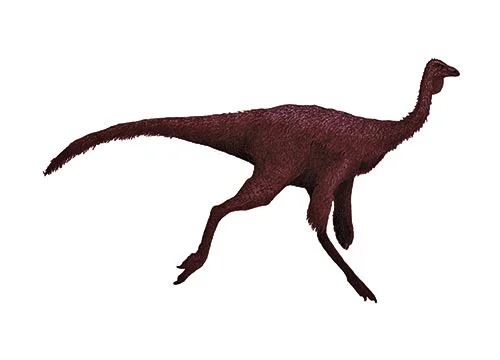Ornithomimus (Bird mimic)

Or-nif-oh-mime-us
Othniel Charles Marsh - 1890
Possible Omnivore
Estimated up to 4.5 meters long
Large Theropod
O. velox (type), O. edmontonicus
USA and Canada
Late Cretaceous, 75 million years ago
Ornithomimus Facts
Ornithomimus, which means “bird mimic,” was a genus of theropod dinosaur that lived during the Late Cretaceous period, about 75 million years ago. It was a member of the group Ornithomimidae, which included other ostrich-like dinosaurs that were characterized by their toothless beaks, long necks, and long, slender legs.
Ornithomimus was a fast and agile dinosaur that could run on two legs at speeds of up to 40 miles per hour, making it one of the fastest dinosaurs known. It was also one of the largest of the ornithomimids, growing up to 4.5 meters (15 feet) in length and weighing up to 400 kilograms (880 pounds).
The beak of Ornithomimus was toothless, indicating that it was a herbivore or omnivore. It likely fed on a variety of plant material, including fruits, leaves, and seeds. Some researchers have also suggested that it may have eaten insects and small animals, such as lizards and mammals.
Ornithomimus had long, powerful legs with three-toed feet that were adapted for running. Its arms were long and slender, with three-fingered hands that could grasp objects. Its neck was also elongated, which may have helped it to reach high branches or pull down foliage.
Although Ornithomimus was a theropod dinosaur, it is not believed to have been a direct ancestor of birds. Instead, it represents a branch of theropod dinosaurs that evolved specialized adaptations for a herbivorous or omnivorous lifestyle, such as the loss of teeth and the development of a beak.
In conclusion, Ornithomimus was a fast and agile dinosaur that lived during the Late Cretaceous period. Its toothless beak, long neck, and long, slender legs are characteristic of the ornithomimids, a group of dinosaur that likely fed on plant material. While not a direct ancestor of birds, Ornithomimus provides important clues about the diversity of life that existed on Earth millions of years ago.



